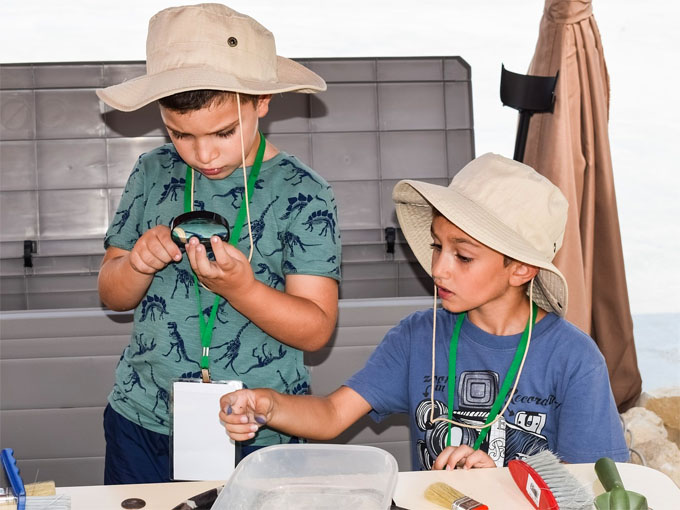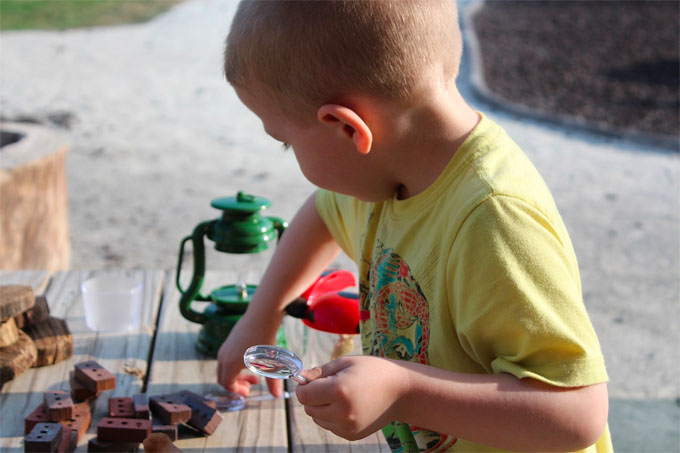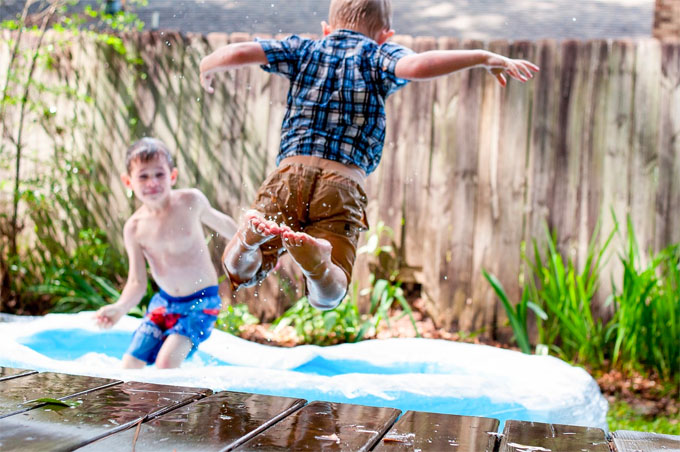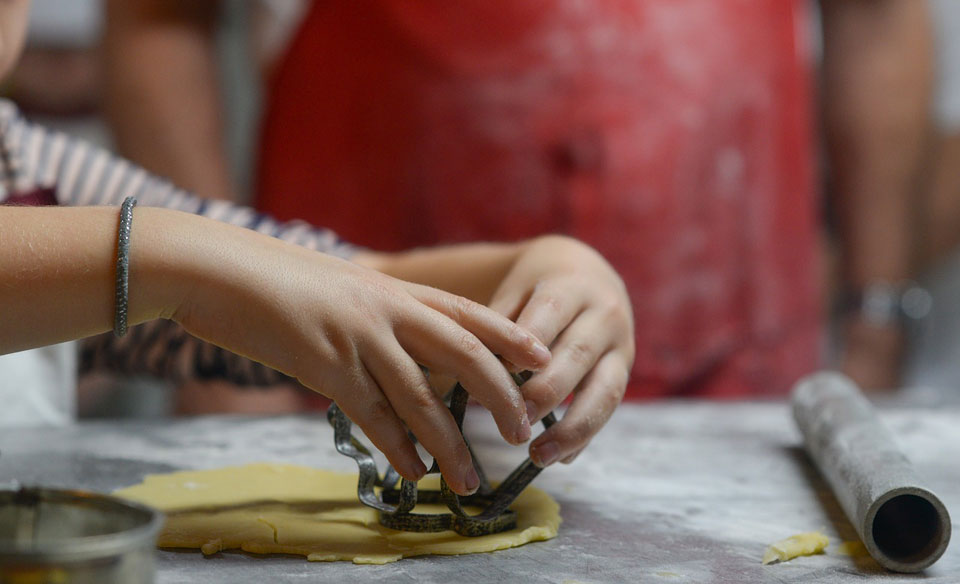Unstructured Play vs Structured Play: Why Finding Balance is Key
I spent majority of my childhood in a quaint house on a forested trail. Whenever we were allowed to play outdoors, we would grab our rusty bicycles and ride them through the trees with branches stuck in our hair, by the stagnant pond we were fond of and finally to the bumpy pebbled track that would take us back to our home. During these rides, we learned and experienced a lot.
Then we moved to an apartment, I grew up and life was suddenly all about the Internet and popular singers. Today, I look at my son, who is only 13 months old, and wonder how to introduce him to organized sports, free play, and creative activities in a safe environment.
Summertime brings a variety of exciting activities to indulge in. Encourage your child! Share on XSummertime brings a variety of exciting activities to indulge in. As a parent, we must encourage our kids to indulge in outdoor and creative playing activities. It is very important to develop a child’s personality and interactions through play activities and incorporate them in their routine from an early age. While choosing these activities you can find yourself overwhelmed by choices and is usually a highly discussed topic among parents.
Is Structured Play really beneficial for kids with ASD? Find out Share on XI am sure you have often found yourself wondering if your kid is involved in too many activities and you are worried that they are under performing in other fields. I’d say that with anything else in life, these activities can also yield a reward when you strike a balance. They can be broadly categorized as structured play and unstructured play. Both have their own sets of benefits and have an imperative role in the growth, welfare and learning abilities as well as the emotional and cognitive development and social performance of the child.
Let’s take a look!
Structured Play
Structured Play is also called goal-oriented play, which simply means that it comes with structured instructions and has an end result to be achieved by the child. They are planned around a particular place and time, usually organized, and supervised by adults.
Why Should You Encourage It?
There are many benefits to structured play, the most important being the development of certain skills in a child. Organized sports like swimming and soccer offer a good physical activity and help in developing gross and fine motor skills. Moreover, they are very enjoyable and enhance the organizational skill and impart the importance of team play and coordination to the kids.
Many interactive games like puzzles and board games are an ideal way to spend time with your kid while making the experience enjoyable and memorable for all. These activities can also be planned around house chores like gardening, working in the house yard or on a car engine. It teaches kids the importance of work and how we can take pleasure in it and find it rewarding. Playing music in the background can get even more pumped up about the activity.
The benefits of structured play and why you should encourage it Share on XStructured play also helps to develop the comprehensive and cognitive skills by introducing new ideas and providing learning opportunities. Coding kits, science kits, Lego sets and board games are just some examples of typically structured activity.
Team building, and social skills can be developed when a large play group activity is organized and can open prospects to new friendships. It is the best way to develop social skills and build emotional tolerance, by celebrating your kid’s victories and also teaching them team spirit and owning up to losses in the game. The parents can closely observe the developmental level of the kid and assess their personal preferences and inclinations.
Beneficial for Kids with ASD
Structured play is highly recommended in children with autism spectrum disorder. Children on the spectrum usually have limited and repetitive play options, and often, free play can be overwhelming. When parents provide guidelines, it can assist them in achieving desired results faster without becoming stressed. It can also help them in improving their social and communication skills by learning to share objects, taking turns exchanging ideas and responding to others.
How does structured play limit your child's imagination? Let's find out! Share on XAre There Any Drawbacks?
If I had to mention some drawbacks of structured play, I’d say some of the indoor options can limit physical activity and social interaction, in turn making the child more introverted. Organizing everything for them can also hinder their own creativity and imagination. If the child is limited to individual activities like toy assembling and puzzles, it can lead towards the kid being anti-social.
Oftentimes, parents try to enforce some activities on their children they don’t really want to be a part of. It can pressurize a child to be involved in something they dislike. Furthermore, it can prevent them from learning what they truly like. My niece was enrolled in Karate classes for an year until she simply refused to go because she hated it. It took us a while to give in as we thought Karate is awesome, but we simply couldn’t impose it on her.
Unstructured Play
The unstructured play is also termed as free play, as it is mostly involved around creative, improvised form of activity. Although it typically involves more time outdoors there’s nothing stopping you and your child from being imaginative in the home too. The child is given an independent aspect of decision making and solving problems.
Here is Why You Should Involve Your Kids in Unstructured Play
It is important to indulge your child in unstructured play for a number of reasons.
A growing child needs physical activity. This can be very dull if it is restricted to exercises and chores, therefore planning outdoor activities can be very fun and tremendously beneficial for the kid. They can also help develop executive function skills and help with memorization of information, limiting distractions, and have a more sustainable focus.
It promotes healthy imaginative activities and encompass the creative nature of your child. The ample amount of sunshine and natural light can also help improve distant vision and keep balanced levels of Vitamin D, while also promoting healthy social skills.
There are dozens of examples of unstructured play:
Pretend play – Children imagining they are brave warriors battling dinosaurs. If your child often launches into an imaginary world, don’t stress over it. Pretend play gives them the freedom to explore their minds, create imaginary creatures and worlds and managing to wind up a story.
Building Blocks – Give your kiddo a set of blocks and they will be busy building all sorts of things – from bridges and castles to people and animals. Anything is possible!
Other things you can hand out to your child to encourage unstructured play include:
- Cardboard boxes
- Toilet paper rolls
- Sidewalk chalk
- Sticks and rocks
Boredom is Healthy
Believe it or not, boredom is not that bad! It can inspire your child to be their most creative self! When parents find their child all dull and bored, they might blame themselves. However, it can actually get the creative juices flow. Allow your kid to delve into their brain to find something fun to do, check out Pinterest for amazing indoor and outdoor activities or suggest a few ideas yourself.
Learning about Cause and Effect
Unstructured play can help your child understand how things work. Without an adult hovering over their head telling them instructions, children are left to figure our things by themselves. Since infancy, a child has a curious nature. They yearn to explore the corners, taste weird objects and touch textures. The curiosity only grows stronger with age. My nieces, when left to their own devices, manage to do lot by themselves. From changing batteries of their toys to figuring out how to reach the ball stuck under the furniture, they are learning to be sell-sufficient.
Keep an Eye Out!
One major drawback of unstructured play is that the child cannot be left alone even for a moment and should be under the parent’s supervision at all times, especially the younger pre-school kids. You have to educate them about the dangerous aspects and how to keep themselves safe and well protected and recognize the possible dangers around them. Getting hurt by sharp objects, sticks and stones etc. is also a possibility.
Balance is Key
Ultimately, children need a mix of both structured and unstructured play, where structure provides rules, discipline and continuity, it’s opposite provides freedom and encourages imagination. If you’re a parent who has often felt the need to schedule most of your child’s day to ensure that he/she is doing something education or beneficial, perhaps it’s time to also schedule in some free play.
Alternatively, if your children have tended to be independent and good at keeping themselves entertained, especially in front of a screen, it may be time to get stuck in to some activities with them.















